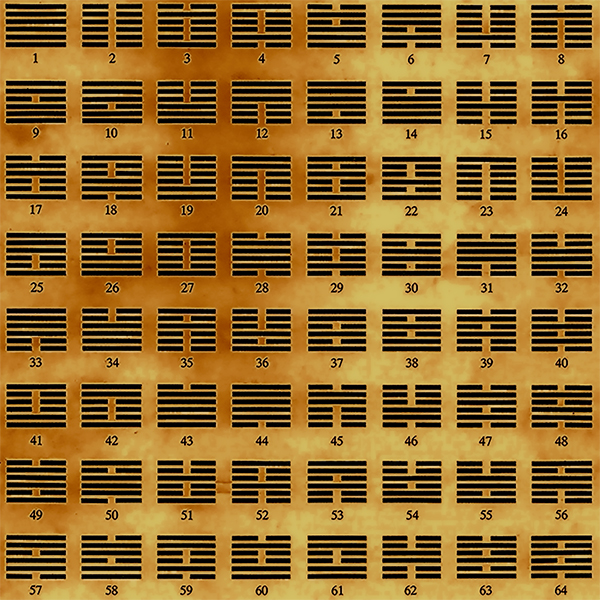The I Ching was developed from nature and seen as the great foundation of Chinese philosophy. It was also known as the Book of Changes which, like ancient astrology, was first a cosmology before it became a divinatory tool. The purpose behind most ancient practices is to guide those who are looking for guidance or answers to disruptions in life.
Below is a table containing hexagrams. Clicking on an individual hexagram opens the page with the individual hexagram description. Press play at top right of that page to hear musical interpretation.

As with ancient astrology, the I Ching utilizes the polarities of light and dark. The original Chinese character for the concept of “I Ching” combined Sun (yang) on top and Moon (yin) on the bottom, implying the universe. The ancient Chinese observed the universe every day and found constant change. Although there was daily change, they found seasonal and annual cycles from which unchanging rules were created. It is not easy to translate these unchanging universal rules into application for human activity, so although the foundation of light/dark is simple, interpretation can be profound and complex.
The I Ching interpretations were drawn from the structure of yang (light) solid lines and yin (dark) broken lines. A combination of 3 yin and yang lines provides 8 different 3-line structures. The 3-lines structures are called trigrams. Two trigrams placed one above the other form the a six-line hexagram structure. There are 64 hexagrams in total.
In summary, every line of a hexagram has meaning and contributes to the total meaning of the hexagram. Each hexagram represents a primary archetype of human condition and all together the 64 hexagrams have commentary for every possible life situation. Very little is known about the origins of the written portion of the I Ching. It remains one of the two most widely enduring books in existence, but it is unique in that it is being constantly reinterpreted. Perhaps it is this vast and continuous shifting of interpretations that has made the I Ching truly ever changing.
Everyone can easily source the wealth of material written regarding the I Ching. The goal here is a tiny introduction to the beauty of these teachings. We have combined basic information about each hexagram, an image of the 6 lines with a musical interpretation (composed and performed by Renaken).
